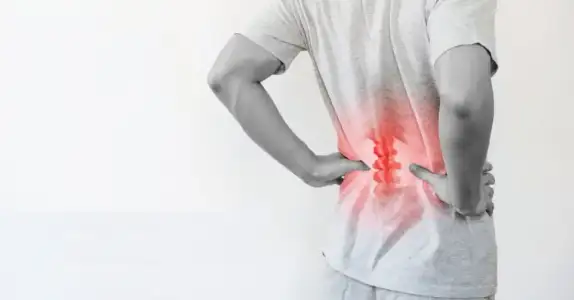What is Dorsalgia? Symptoms and Treatment

If you’ve ever typed “pain in the upper back” into a search engine or talked to a doctor about your sciatic border pain, you may have come across the word “dorsalgia.” But what is dorsalgia? Is it a diagnosis or a general term for back pain anyway?
Severe dorsalgia diagnosis What’s next after it’s put in? What is the best treatment option to choose when your doctor diagnoses you with dorsalgia? Is it more appropriate to continue with surgery or to manage pain with conservative treatment? Read on to learn more about dorsalgia, including treatments and therapy options.
What is Dorsalgia?
For starters, dorsalgia is severe back pain that can come from different parts of the spine. There are six types of dorsalgia, depending on the exact part of the spine where the pain comes from. These;
Dorsalgia types:
In total, there are six known types of dorsalgia. These are listed here:
- Cervical dorsalgia: Sometimes cervical dorsalgia is also medically referred to as cervicalgia. In this type, the cervical spine is involved. The pain you feel is in the neck area and occurs as a result of some kind of injury or otherwise degeneration of the cervical spine.
- Cervicothoracic dorsalgia: As the name suggests, this type of dorsalgia involves the cervical and thoracic regions of the spine. The cervical spine is the uppermost part of the vertebral column located in the neck region. The thoracic spine is the second part of the vertebral column. It is located midway between the cervical spine and the lumbar spine. Therefore, the pain in cervicothoracic dorsalgia comes from both of these parts.
- Thoracic dorsalgia: Compared to cervicothoracic dorsalgia, this type of back pain comes only from the thoracic vertebral segments. Typically, this type of dorsalgia is rare.
- Thoracolumbar dorsalgia: Thoracolumbar dorsalgia involves both the thoracic and lumbar spine. Often, this type includes both upper and lower back pain.
- Lumbar dorsalgia: The lumbar spine is located where the thoracic spine ends and continues to where the sacral spine begins. Since this part of the back is the most used area in our daily movements, lumbar dorsalgia is more common in patients with this disease.
- Lumbosacral dorsalgia:This type includes back pain originating from both the lumbar and sacral spine.
The severity of dorsalgia depends on the area of the spine it affects and the likely cause of the pain. To accurately determine the cause of the pain, you need a true and real diagnosis.
What are Dorsalgia Symptoms?
The symptoms of this disease, which vary in the middle of six types, are mostly common in the middle of the patients. You may feel a sharp or excruciating pain in your back or just in your neck. This pain also carries a burning sensation at the same time. You may find it difficult to change your situation to climb stairs, get out of a chair or bed.
In addition, there will be pain or difficulty bending over. In general, a change of posture patients with dorsalgia is painful for In some cases where endings are compromised due to swelling of the spinal discs, symptoms often include numbness in the upper and lower extremities. Sometimes a stinging sensation is also experienced. Both of these issues make it difficult for the patient to quickly perform daily activities.
- On-Site Comments
















Comment